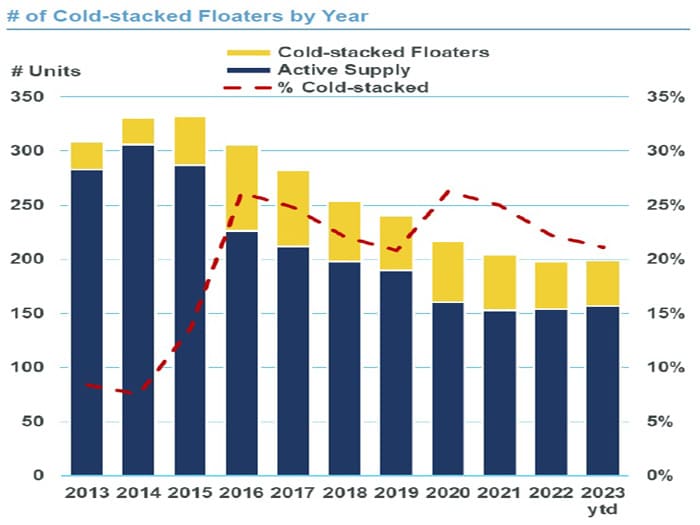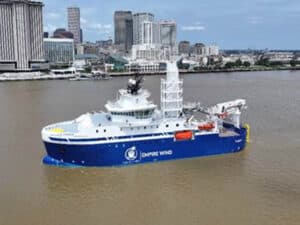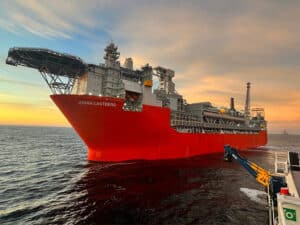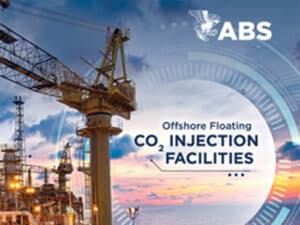
Offshore drilling: More cold-stack floaters set for reactivation?
Written by Nick Blenkey
Graph: Maritime Strategies International
With demand for offshore drilling rigs pushing up, will more drilling contractors start reactivating cold-stacked floaters? London-based Maritime Strategies International (MSI) says that, while the market for floaters has long since crossed an inflection point incentivizing the reactivation of cold-stacked tonnage, operators remain disciplined in their approach
In its second quarter MODU Report, MSI notes that an improvement in energy market conditions has driven up rig demand against a backdrop of inelastic supply, supporting utilization, earnings and newbuilding prices for mobile offshore drilling units.
This, along with concerns about the capacity of the active fleet to meet forecast demand, has put the spotlight on the cold-stacked floater fleet. The oil market plunge between 2014 and 2016 saw the proportion of the floater fleet that is cold-stacked go from 8% to 25% in just two years. Day rates remained dismal through the second half of the decade and total floater supply has since contracted to rebalance the market with further scrapping.
Now with demand improving, MSI says that the decisions of a handful of operators will largely determine the segment’s near-to-medium term supply and demand balance. Notionally, there were 41 cold-stacked floaters as of May 2023, with 22 of them being the 6th or 7th generation assets deemed most competitive.
At an estimated $600 million, a newbuild ultra deepwater drillship would be a hefty investment and the rig owners with pockets deep enough to make such that kind of outlay all have pools of cold-stacked units, for which reactivation would make more economic sense.
“Rig owners differ materially in their approach and attitudes towards their stacked fleets. Transocean has the largest fleet of cold-stacked units and hence lays claim to the most operational leverage within its peer group,” says Pradip Adhikari, Data and Markets Analyst, MSI. “For Valaris, reactivation will only be considered where a meaningful return can be made on reactivation costs under a firm contract. This strategy is evident in its most recent reactivation, the Valaris DS-8, which secured a three-year contract with Petrobras at a $430,000/day rate.”
MSI sees companies such as Diamond Offshore and SOCAR having little appetite for reactivation of first to fourth generation units but having growing interest in assets that can command higher rates. Diamond recently reactivated the harsh environment semisubmersible Ocean GreatWhite and has given no indication of any such plans for the three remaining units.
“Noble Corp and Seadrill have four cold-stacked high-spec drillships between them which have been actively marketed in recent tenders – we think these are likely to join the active fleet soon given the current demand-side momentum,” says Adhikari.




